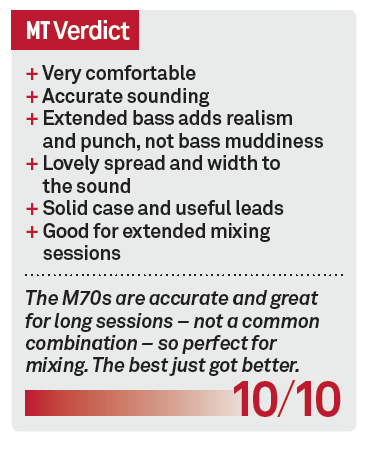Audio Technica ATH-M70x Review
What could possibly be better than MusicTech’s headphones of 2014? Maybe their new big brother? Andy Jones gets AT it Details Price £299 Contact Audio-Technica 0113 277 1441 sales@audio-technica.co.uk Web eu.audio-technica.com/en/ We’ve only just presented the MusicTech award for Best Headphones of 2014 to Audio-Technica for the company’s incredible M50x. So it was a bit […]
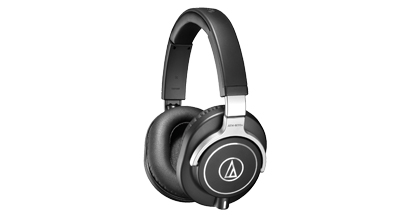
What could possibly be better than MusicTech’s headphones of 2014? Maybe their new big brother? Andy Jones gets AT it


Details
Price £299
Contact Audio-Technica 0113 277 1441 sales@audio-technica.co.uk
Web eu.audio-technica.com/en/
We’ve only just presented the MusicTech award for Best Headphones of 2014 to Audio-Technica for the company’s incredible M50x. So it was a bit of a surprise (and annoyance, for the person who paid for the award) when the company recently announced these, the new top-of-the-M-Series M70x headphones. Can they be as good as, or even surpass, the M50s?
Before I ans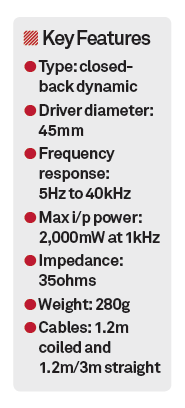 wer that, a quick recap is needed. The M-Series is Audio-Technica’s range of ’phones designed for studio use with long sessions in mind, and accuracy and comfort the main goals. “They are ideal for studio mixing, FOH, DJing, mastering, post-production and listening,” AT says.
wer that, a quick recap is needed. The M-Series is Audio-Technica’s range of ’phones designed for studio use with long sessions in mind, and accuracy and comfort the main goals. “They are ideal for studio mixing, FOH, DJing, mastering, post-production and listening,” AT says.
The original 50s were a studio standard, so the replacement – last year’s (award-winning) M50x – wasn’t redesigned; more tweaked and refined to make it one of the best choices for headphone mixing (especially at the price of just £159). “They take an industry standard up a notch,” I said last May, before awarding them 10/10. “These are among the best headphones you can get for your studio.” (And yes it does feel odd quoting myself.)
Going AT-AT it
The 70 comes in both open- (R70x) and closed-back (M70x) formats (see box, top right) and we’re looking at the latter. So what have they got over the 50s? First up there’s an extended frequency range of 5Hz to 40kHz (compared to the 50s’ 15Hz to 28kHz).
As humans we’re only able to hear between 20Hz and 20kHz (less as you age), so you might think this a moot point. But some argue that the wider the range available on playback, the more interplay is enabled between the frequencies you can’t hear (above and below the usual thresholds) and those you can hear, offering a more realistic listening experience.
Other differences are less dramatic. The M70s are slightly lighter (by 4g!) and the headband construction is thinner. They have the same sized driver (45mm) designed with copper clad voice coils and rather mysterious-sounding ‘rare earth magnets’.
Reference Time
Since the M50 test I’ve been using them as my reference headphones, not just for mixing but for testing other headphones. I have found just one set of more accurate headphones, a set of AKGs that never made it to the test bench for various tedious reasons. And since those are over £1000, you’d expect a greater level of accuracy. So it makes sense, for more than one reason, to use the M50s as a reference in this test. So how do the big brother M70s compare with them?
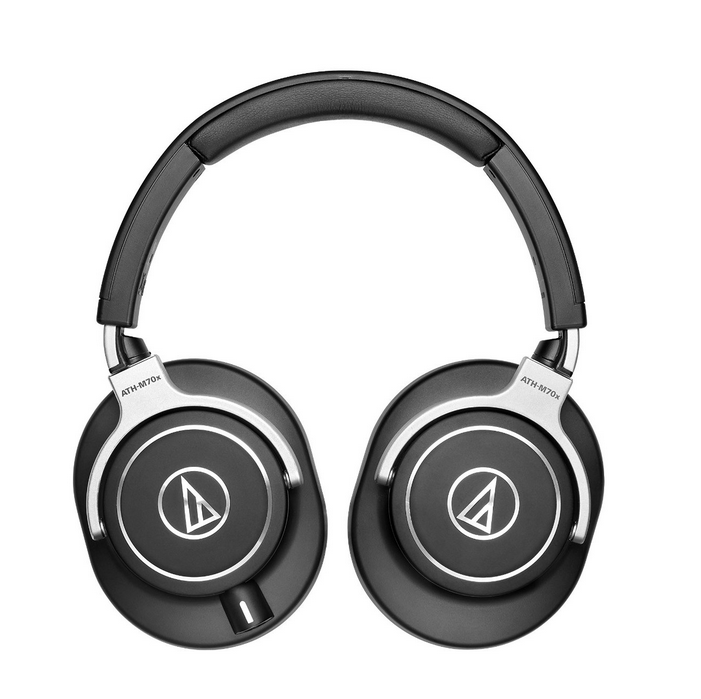
Surprisingly there’s a noticeable difference just putting the 70s on. They are a little more ‘hugging’ and encompassing, fitting my (admittedly rather big) head better. On to the sound, and I queued up my usual tracks for listening tests (from the likes of Leftfield, Syntax, Talk Talk, The The et al). Because of the extra frequency response on the M70s I expected more bass but actually the opposite is true. If anything there’s now a noticeable punchiness of the bass on the 70s compared with the 50s.
It’s more defined; perhaps more accurate on dance music and flatter. You feel you get a little more bass from the 50s but that perhaps it’s ever so slightly coloured compared with their newborn older brother. On acoustic music it’s less pronounced and the stereo field width on both models is exceptional. The 70s really do immerse you in your music, almost to the point where you lift your arms up to pick parts out to the left and the right, so clear is the mix.
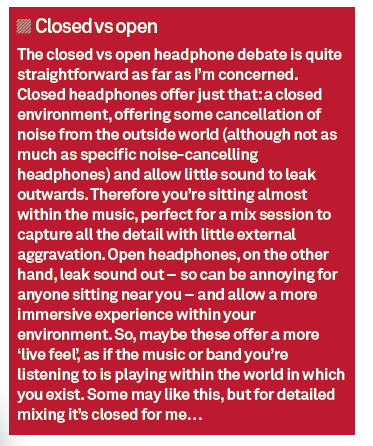
So while I still wholeheartedly recommend the 50s, especially for extended listening, I think the 70s are a tad more accurate at the bottom end, perhaps down to that interplay with the frequencies we can’t hear – there’s something in that argument after all! So I have myself a new set of reference headphone monitors. I suppose we could just use Tippex on last year’s award for 2015?
